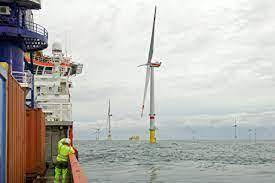Today’s Current Affairs: 20th Nov 2023 for UPSC IAS exams, State PSC exams, SSC CGL, State SSC, RRB, Railways, Banking Exam & IBPS, etc
Table of Contents
Central Adoption Resource Authority:

The Supreme Court questioned the “great delay” plaguing India’s adoption regulation body, the Central Adoption Resource Authority.
- The Supreme Court has recently questioned the significant delay in India’s adoption processes. Approximately 30,000 prospective parents wait for an average of three years, with only 10% of orphaned children adopted annually.
Central Adoption Resource Authority:
- It is a statutory body of the Ministry of Women & Child Development, Government of India.
- It is designated as the Central Authority to deal with inter-country adoptions in accordance with the provisions of the Hague Convention on Inter-country Adoption, 1993, ratified by the Government of India in 2003.
- It is the nodal body regulating the adoption of “orphaned, surrendered and abandoned children” in India.
- It monitors and regulates bodies such as the State Adoption Resource Agency (SARA), Specialised Adoption Agency (SAA), the Authorised Foreign Adoption Agency (AFAA), Child Welfare Committees (CWCs), and District Child Protective Units (DPUs).
- In India, a child can be placed with a family under the Hindu Adoption and Maintenance Act, 1956; the Guardians and Wards Act, 1890; and the Juvenile Justice Act, 2000.
- The mandatory registration of Child Care Institutions (CCIs) and linking to CARA has been provided in the Juvenile Justice (Care and Protection of Children) Act, 2015.
Cambridge’s Word Of The Year : Hallucinate

The word of the year, ‘hallucinate’, chosen by the Cambridge Dictionary, sheds light on the complexities of Artificial Intelligence (AI) and its potential dangers.
- The original definition of “hallucinate” is to seem to sense something that doesn’t exist, usually because of a health condition or drugs.
- Cambridge Dictionary’s expanded definition of “hallucinate” includes the production of false information by AI.
- The intelligentization of AI poses real dangers, particularly in politics and public life, where disinformation and misinformation can have far-reaching consequences.
- The expanding reach of Open AI and its tools like Chat GPT, Google Bard, and Microsoft’s Copilot have been widely discussed throughout the year.
CFE Treaty : Formal Suspension

NATO (North Atlantic Treaty Organization) has announced the formal suspension of the Treaty on Conventional Armed Forces in Europe (CFE), a key Cold War-Era Security Treaty in response to Russia’s pullout from the deal.
CFE Treaty:
- It was signed in 1990 and fully ratified in 1992, aimed to prevent massing of conventional armed forces by NATO and Warsaw Pact countries near mutual borders during the Cold War.
- It placed limits on the deployment of conventional military forces in Europe and played a significant role in reducing tensions and arms build-up in the region.
- This treaty was one of several Cold War-era agreements involving Russia and the United States.
In News:
- Russia had suspended its participation in the CFE Treaty in 2007 and formally announced its intention to withdraw in 2015.
- The recent move to finalise the withdrawal came after the Russian President signed a bill denouncing the treaty in May 2023.
- Russia has blamed the US and its allies for the withdrawal, citing their “destructive position” on the treaty.
- Russia claims CFE is no longer serves its interests because it was signed to restrict the use of conventional weapons and equipment and not other advanced weapons.
- Russia cited that preserving the CFE Treaty has become unacceptable from the standpoint of its fundamental security interests, citing developments in Ukraine and NATO’s expansion.
- NATO underlines its commitment to reducing military risk, preventing misperceptions, and maintaining security.
- The suspension of the CFE Treaty underscores the ongoing tensions between Russia and NATO, which have significant implications for global security and regional stability, particularly in Eastern Europe.
Zorawar Light Tank : Ready For Trials

India’s indigenously designed and developed light tank, tentatively named Zorawar, is likely to be ready for trials soon.
- Zorawar Light Tank is an indigenously designed and developed Light Tank.
- It was developed by the Defence Research and Development Organisation (DRDO) in collaboration with Larsen & Toubro Limited.
- It is designed to operate in varying terrains, from high-altitude areas and marginal terrains to island territories.
- It will be highly transportable for rapid deployment to meet any operational situation.
- It will be equipped with all the modern technologies, such as artificial intelligence, drone integration, a high degree of situational awareness, and amphibious operation capability.
- It will weigh less than 25 tonnes with a high power-to-weight ratio as well as superior firepower and protection.
- Zorawar was a military general, Zorawar Singh Kahluria, and had served under Jammu’s Raja Gulab Singh in the 19th Century.
Pradhan Mantri Kisan Samman Nidhi (PM-KISAN) Yojana:

The Prime Minister recently distributed the 15th installment of the Pradhan Mantri Kisan Samman Nidhi (PM-KISAN) Yojana, totalling over Rs 18,000 crore and benefiting more than 80 million farmers.
- PM-KISAN is a Central-Sector scheme with 100% funding from the Government of India.
- The scheme aims to supplement the financial needs of the farmers in procuring various inputs to ensure proper crop health and appropriate yields, commensurate with the anticipated farm income.\
- It has become operational from 1.12.2018.
- Under the scheme, income support of 6,000/- per year in three equal installments will be provided to all land-holding farmer families.\
- The definition of family for the scheme is husband, wife, and minor children.
- The State Government and UT administration will identify the farmer families that are eligible for support as per scheme guidelines.
- The fund will be directly transferred to the bank accounts of the beneficiaries.
World Energy Employment 2023 Report:

The International Energy Association released the World Energy Employment 2023 report.
Key findings:
- Global employment in the energy sector grew by 3.4 million over pre-pandemic levels to 67 million in 2022.
- “Clean energy sectors added 4.7 million jobs globally over the same period and stand at 35 million.
- Fossil fuel jobs recovered more slowly after layoffs in 2020 and remain around 1.3 million below pre-pandemic employment levels, at 32 million.
- Job growth in the clean energy as well as fossil fuel sectors remained positive in India compared to pre-pandemic levels of 2019.
- With this, the country saw the fourth-highest number of new clean energy jobs being created in the past three years.
- The report mentioned five major sectors of the energy industry that led to maximum job creation post-pandemic.
- These sectors were solar PV, wind, electric vehicles (EVs) and battery manufacturing, heat pumps, and critical mineral
- These five sectors have employed around 9 million workers until Out of all the sectors, Solar PV emerged as the largest, with around 4 million jobs.
- On the other hand, the manufacturing of EVs and their batteries was the largest source of growth.
NEST Initiative:

The Indian Green Building Council (IGBC) launched a rating and certification initiative called ‘Nest’.
- NEST initiative is to promote sustainable and eco-friendly construction in the domestic housing sector.
- It would pave the way for individual house owners and the residential sector to adopt green building features in a big way to help bring down electricity consumption and water usage and create a healthy living space.
Indian Green Building Council:
- It is part of the Confederation of Indian Industry(CII) and was formed in 2001.
- It is India’s Premier certification body.
- The council offers a wide array of services, which include developing new green building rating programmes, certification services,and green building training programmes.
- The council also organises the Green Building Congress, its annual flagship event on green buildings.
- It is also among the five countries that are on the board of the World Green Building Council, discussing global issues at COP and similar global platforms.
- The rating is based on six environmental categories, which include sustainable station facility, health, hygiene and sanitation, energy efficiency, water efficiency, smart and green initiatives and innovation and development.
Headquarters: Hyderabad.
Sea buckthorn : Awarded GI Tag

Sea buckthorn fruit from Ladakh has been recently awarded a GI tag.
- Sea buckthorn (Hippophae rhamnoides) is a plant found throughout Europe and Asia.
- In India, it is found above the tree line in the Himalayan region, generally in dry areas such as the cold deserts of Ladakh and Spiti.
- It is naturally distributed over 11,500 hectares in the Ladakh region.
- It produces small orange or yellow-coloured berries that are sour in taste but rich in vitamins, especially vitamin C.
- The shrub can withstand extreme temperatures ranging from minus 43 degrees Celsius to 40 degrees Celsius and is considered drought-resistant.
- These two characteristics make the shrub an ideal plant species to establish in cold deserts.
- Sea Buckthorn berries have the unique characteristic of remaining intact on the shrub throughout the winter months despite the subzero temperature.
- It has been used traditionally for a variety of purposes.
- Every part of the plant—fruit, leaf, twig, root, and thorns—has been traditionally used as medicine, nutritional supplement, fuel, and fence.
- Many bird species feed on the berries when other sources of food are limited in the region.
- The leaves serve as protein-rich fodder for cold desert animals like sheep, goats, donkeys, cattle, and double-humped camels.
- Therefore, it is popularly known as the ‘Wonder Plant’, ‘Ladakh Gold’, ‘Golden Bush’, or ‘Gold Mine’ of cold deserts.
Global Talent Competitiveness Index (GTCI), 2023:

The Global Talent Competitiveness Index has seen India fall sharply from rank 83 ten years ago to rank 103 in its latest report out recently.
- Global Talent Competitiveness Index (GTCI) measures how countries grow, attract, and retain talent.
- It is an annual benchmarking report published by the prestigious chain of business schools, INSEAD.
- It provides a unique resource for decision-makers to understand the global talent competitiveness picture and develop strategies to boost their economies.
- The index uses two sub-indices: input and output.
- The input measures regulatory and business environments, as well as steps being taken to foster talent and retain it.
Highlights of GTCI 2023:
- The 10th edition of the report covers 134 countries around the world across all income groups.
- Singapore, Switzerland, and the United States are among the top three countries on the index.
- Denmark, the Netherlands, Finland, Norway, Australia, Sweden, and the United Kingdom make up the rest of the Top 10.
- India is ranked 103, the worst among that of the BRICS countries. China remains at the top of the BRICS group of countries at rank 40, Russia at 52, South Africa at 68 and Brazil at 69.
- Other countries ranking better than India are Rwanda, Paraguay, Tunisia, Namibia, Bolivia, Ghana, El Salvador, Gambia, Kenya, Morocco, and Eswatini.
- As per the report, other emerging countries have shown improvements on this index, with China, Indonesia, and Mexico being cited for special mention.
Cosmic Vine : Extensive Galaxy Structure

A team of researchers recently identified an extensive galaxy structure named “Cosmic Vine”
- According to the study, the Cosmic Vine was spotted after poring over data collected by the James Webb Space Telescope (JWST), humanity’s most powerful tool for peering into the far reaches of space and time.
- Cosmic Vine is a massive “vine-like structure” that encompasses 20 galaxies and stretches for over 13 light years.
- It’s also very ancient.
- The researchers pegged it at redshift 3.44, meaning it’s situated in the early universe.
- A redshift of 3.44would mean light from the Cosmic Vine has been traveling for between 11 and 12 billion years before reaching JWST.
- It harbours two of the most massive galaxies ever discovered at such a high redshift—Galaxy A and Galaxy E, both in a quiescent state, indicating a reduced rate of star formation.
- Researchers believe that the Vine might serve as the precursor to a galaxy cluster, providing insights into the formation of such clusters and the emergence of massive galaxies within them.
New Pamban Bridge : Likely To Be Inaugurated By The Prime Minister

The new Pamban Bridge is likely to be inaugurated by the Prime Minister in a few months.
- New Pamban Bridge is India’s first vertical-lift railway sea bridge.
- It connects Rameswaram on Pamban Island to Mandapam on the mainland in Tamil Nadu.
- The total length of the bridge is 078 km.
- It will have 99 spans with 18.3-meter-long girders. The navigational span will be 63 metres.
- It will replace the iconic Pamban Bridge, India’s first sea bridge, which opened in 1914.
- The new bridge is being built parallel to the old Pamban Bridge by Rail Vikas Nigam Limited.
- The most unique feature of the new Pamban Bridge is its vertical lift facility. It will help boats pass under the bridge smoothly.
C-130J Super Hercules : Succesfully Landed

The Indian Air Force (IAF) successfully landed two of its C-130J-30 ‘Super Hercules’ military transport aircraft at a rudimentary and unfeasible airstrip in Uttarakhand
- C-130J Super Hercules is a four-engine turboprop military transport aircraft.
- It is the latest production version of the C-130 Hercules. It replaced, in production, the previous C-130H.
- The C-130J Super Hercules made its first flight in 1996.
- It is the US Air Force’s principal tactical cargo and personnel transport aircraft.
- It was developed by Lockheed Martin, a US security and aerospace company.
- It primarily performs the tactical portion of the airlift mission, is capable of operating from rough, dirt strips, and is the prime transport for airdropping troops and equipment into hostile areas.
- The largest operators are the US Air Force, US Marine Corps, Australia, Canada, India, Italy, and the United Kingdom.
- It has reduced crew requirements. A minimal crew of three men is required to operate this aircraft, including two pilots and one loadmaster.
- It is powered by four Rolls-Royce AE 2100D3 turboprop engines.
- It has digital avionics, including a Head-Up Display (HUD) for each pilot.
- Range: 6,852 km (no payload)
- Speed: 644 km/hr
- It is capable of short takeoffs and landings from unprepared runways.
- C-130J-30 is a stretch version of the C-130J.
- The C-130J-30 adds 15 feet to the fuselage, increasing usable space (two more pallets of equipment) in the cargo compartment.




